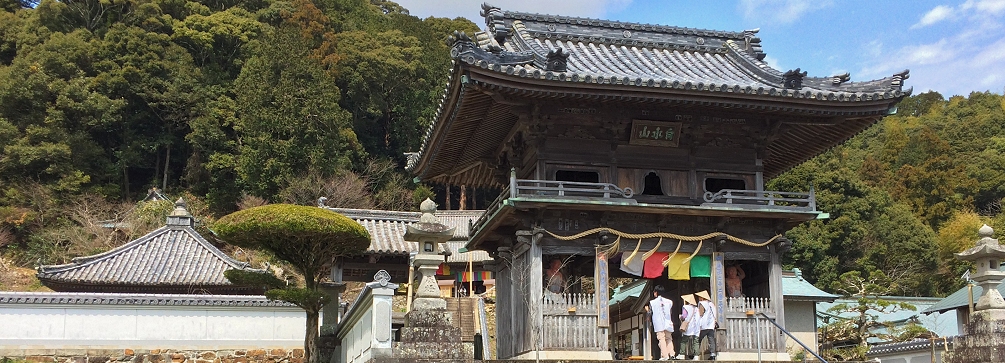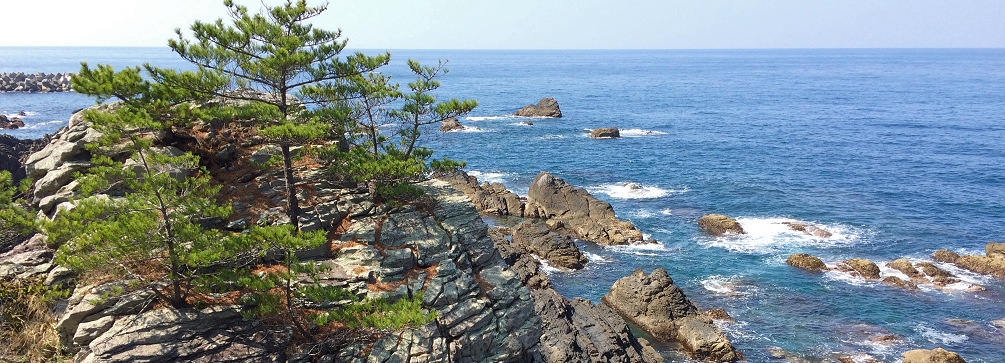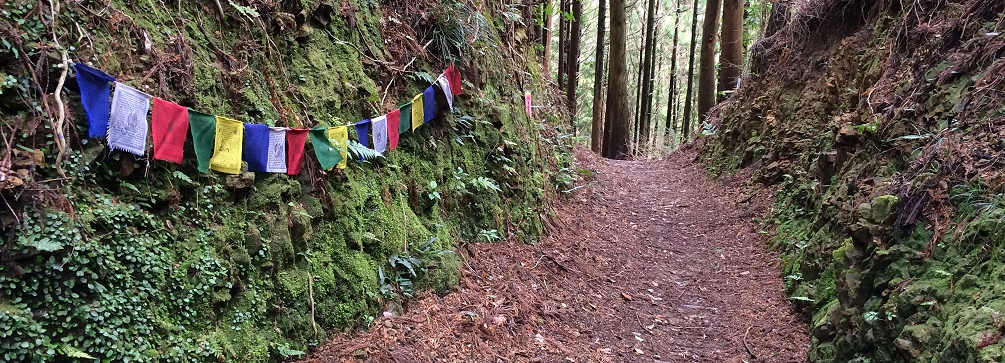Shikoku Temple Trek 3
Kechigan – The Completion of the Vow

Shikoku Temple Trek 3 Slide Show
Shikoku Temple Trek 3 Slide Show for iPad and iPhone
Shikoku Temple Trek Trip Comparison and FAQs

Be sure to watch the Shikoku Pilgrimage episode of the six-part PBS documentary series, Sacred Journeys. The episode on the Shikoku Pilgrimage, which features the group from the 2013 Mountain Hiking Holidays Shikoku Pilgrimage Trek, aired on December 16, 2014 on most PBS stations in the U.S. The DVD of the Sacred Journeys series is available at the Shop PBS website. Or, you can watch the episode on iTunes; search the iTunes Store for “Sacred Journeys Shikoku.” Consider joining us on this trip to experience the pilgrimage for yourself!
Consider the springtime Shikoku Temple Trek 1 in April or the Shikoku Temple Trek 2 in November during the fall foliage season.
The “Shikoku Temple Trek 3” is the third component of our Shikoku Temple Trek tour series. This tour will allow those who have participated in both the original “Shikoku Temple Trek 1” and the “Shikoku Temple Trek 2” to complete the Shikoku 88 Temple Pilgrimage, an achievement known by the Buddhist term kechigan meaning “the completion of the vow.”
Since the Shikoku Pilgrimage is a circular route, you can begin anywhere, and first time participants are welcome on any of our three Shikoku trips. You need not have been on the original Shikoku trip to enjoy this tour. The Shikoku Temple Trek 3 involves visits to the 32 pilgrimage temples not included in earlier tours using a combination of hiking, walking and bus touring. Follow in the footsteps of Kobo Daishi, the eighth century monk around whom the Shikoku Pilgrimage revolves. Enjoy hikes along three segments of the pilgrimage route that still follow the old earthen paths—the Soemimizu Pilgrim Trail, the Kashiwazaka Trail, and the pilgrim’s route over the Matsuo Pass in southwestern Shikoku. Other days will include vehicle-supported visits to pilgrimage temples in both urban and rural settings with options to walk between some of them. Visits to Takamatsu’s famous Ritsurin Garden and Kochi’s seventeenth century castle and azalea-bedecked Makino Botanical Gardens will help to round out this trip. Overnight stays at comfortable lodgings including seaside resorts will enhance your “kechigan” trip along the Shikoku pilgrimage route.

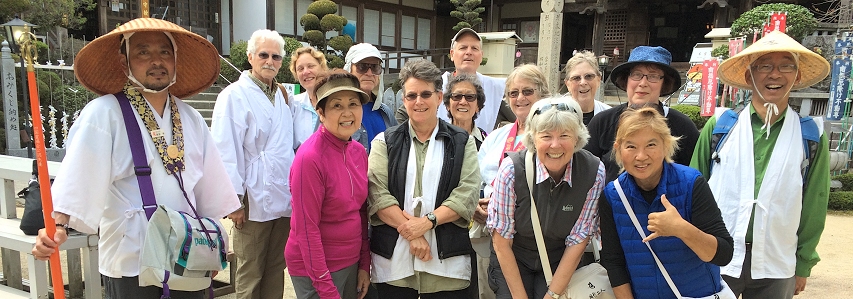
Mountain Hiking Holidays’ first kechigan group.
Kechigan (結願)
In April 2017, for the first time, a group of Mountain Hiking Holidays hikers completed the three tours that make up our Shikoku Temple Trek tour series. Over the course of the preceding four years, this group of hikers participated in Shikoku Temple Trek 1, Shikoku Temple Trek 2 and Shikoku Temple Trek 3 during which they visited each of the 88 temples along the route of the Shikoku 88 Temple Pilgrimage. In April 2017, they completed their pilgrimage. We congratulate them all on their achievement!

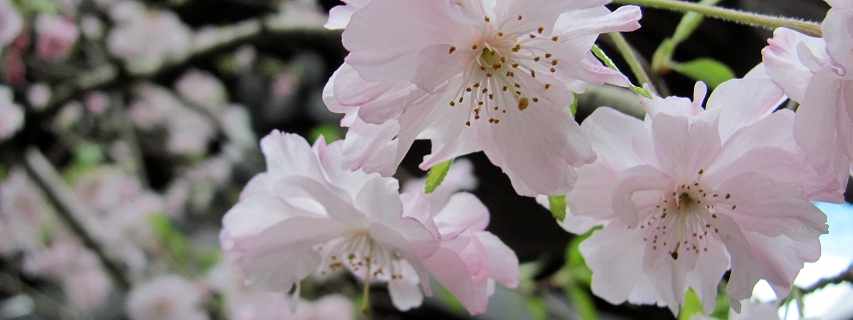
Sakura (cherry blossoms) brighten a springtime journey along the pilgrimage route at Dainichiji (Temple 13).
Day 1
Overnight in Tokushima
Lunch and dinner included
Today, walk the pilgrimage route from Temple 13 (Dainichiji) to Temple 17 (Idoji) through rural and suburban landscapes west of central Tokushima. The first three temples are arrayed around the base of a wooded hill called Tatsugayama. The pilgrim’s trail then leads through a more settled area passing agricultural fields en route to the last two temples. Idoji (Temple 17) at the end of today’s walk, is a well-kept temple with a striking red gate (“niō-mon”) housing the temple’s guardian statues (known as “niō-zō” or “kongō-rikishi”). If you’re up for more walking, you can opt for an afternoon hike on the paths of Tokushima’s Mount Bizan. From the summit views extend over the Kii Channel to Awaji island and the distant mountains of Wakayama prefecture. The walk from Temple 13 to Temple 17 covers a distance of about five and half miles. The afternoon walk to the top of Mount Bizan is about two miles in length.
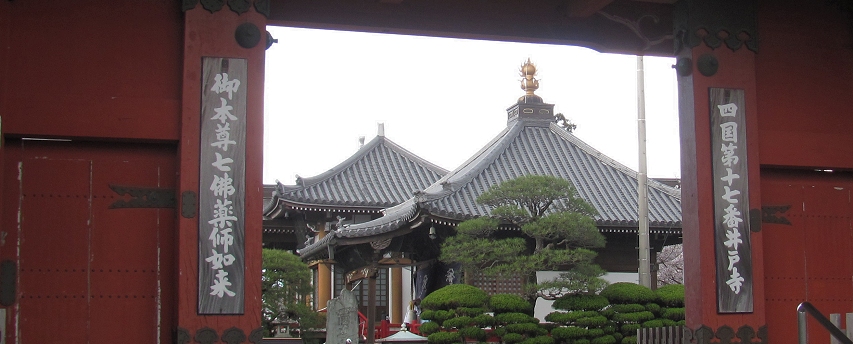
Idoji (Temple 17) through the temple gate (nio-mon).

Day 2
Overnight in Tokushima
Breakfast and lunch included
Travel by vehicle to Onzanji (Temple 18). A short walk along small lanes and paths through bamboo groves brings you to the hillside temple. After visiting Onzanji, transfer a short distance by vehicle to Tatsueji (Temple 19). Following the visit to Tatsueji another vehicle transfer brings you to the base station of the Tairyuji ropeway. Ascend to Tairyuji (Temple 21) and follow the newly restored Iwayamichi mountain path to the village of Asebi. From Asebi, the pilgrimage path continue over a wooded ridge to Byodoji (Temple 22). You can walk all the segments described or pick and choose as you desire. Walking all the segments involves a distance of about seven miles. Return by vehicle to Tokushima for a second night. Dinner is on your own this evening.
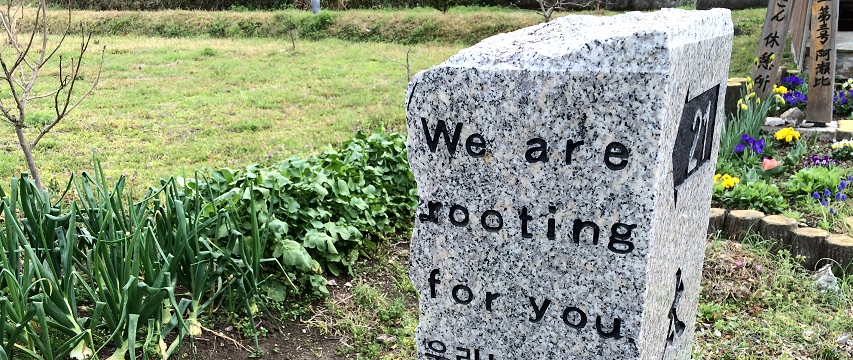
Encouragement for the pilgrim en route to Temple 22.
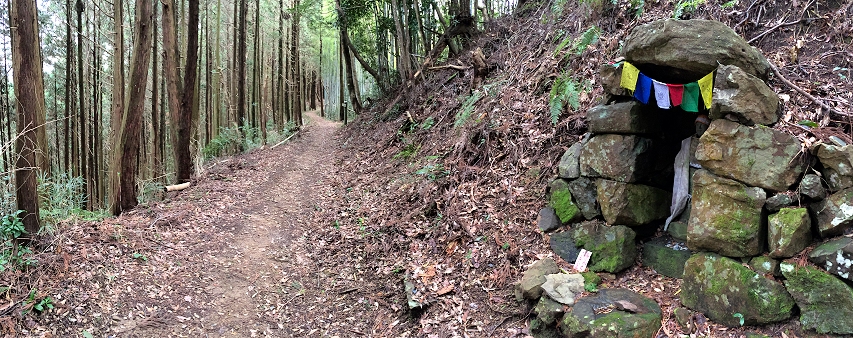
The trail from Asebi village to Byodoji (Temple 22).

Day 3
Overnight in Kochi
Breakfast, lunch and dinner included
Travel by vehicle down the eastern Shikoku coast heading toward Cape Muroto. En route, pay a visit to the temple commonly known as Saba Daishi (“saba” means mackerel). The temple’s name derives from a miraculous event involving Kobo Daishi and a fishmonger. Saba Daishi is the fourth “bangai” temple, one of twenty such temples affiliated with the Shikoku Pilgrimage but not part of the official eighty-eight. Upon reaching Cape Muroto, visit Shinshoji (Temple 25) and Kongochoji (Temple 26). A walk between these two temples is an option covering about three and a half miles. Continue by vehicle to Kochi city stopping en route to visit Dainichiji (Temple 28) out the outskirts of the city.
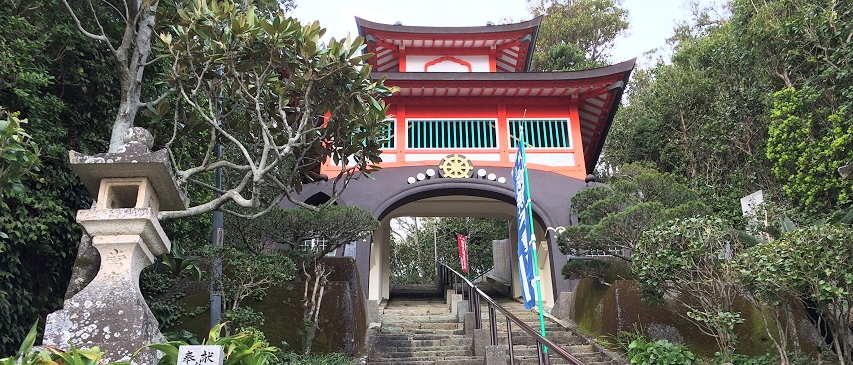
Gate at Shinshoji (Temple 25).

Day 4
Overnight on the Yokonami Peninsula
Breakfast, lunch and dinner included
Optional morning visit to Kochi Castle, one of the dozen or so castles in Japan that have a “tenshu” (tower, or keep) dating from the feudal period; it’s also the only castle in Japan that retains it original palace. Following the castle visit, travel to Chikurinji (Temple 31) set atop Mount Godai. Chikurinji features a dramatic five-tier pagoda and is adjacent to the Makino Botantical Gardens which should be awash in azalea blossoms in April and May. After enjoying the temple grounds and the orchid-filled conservatory at the Makino Gardens, travel by vehicle to the temples of Zenjibuji, Sekkeiji, Tanemaji, and Kiyotakiji (Temples 32-35). A short uphill hike is possible at Zenjibuji and the final approach to Kiyotakiji will be on foot. Following the temple visits, travel by vehicle to a comfortable hilltop hotel on the Yokonami Peninsula offering views over the Pacific. Total walking distance for this day is about three miles.
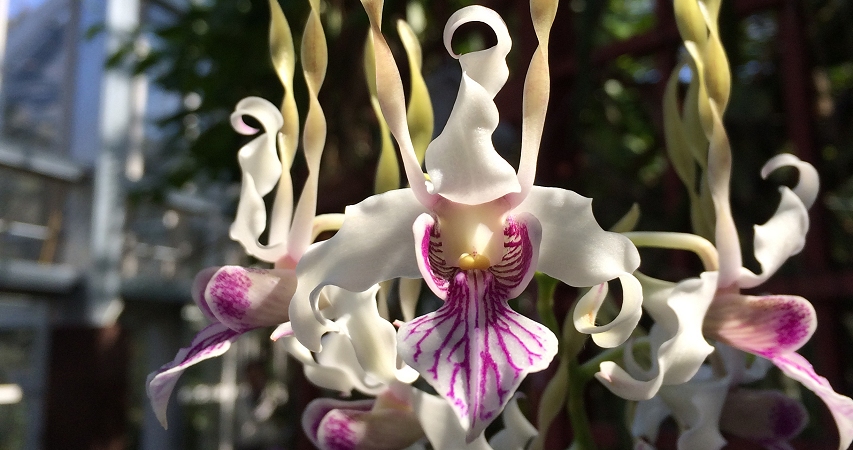
Floral splendor near Temple 31. Dendrobium stratiotes in the conservatory of the Makino Botanical Gardens, Kochi.


The trail to Matsuo Pass.
Day 5
Overnight in Uwajima
Breakfast, lunch and dinner included
This morning, travel by vehicle southward to the northern trailhead of the Soemimizu Pilgrim Trail. Enjoy a walk along a forested ridge on this three mile section of the old pilgrimage trail. Following the hike, continue by vehicle to Enkoji (Temple 39) backdropped by wooded Sekkizan (“Red Turtle Mountain”). It is said that in the year 911 a turtle emerged from the sea and brought a red bell to this temple. There is a pond on the temple grounds called Kame no Ike (“Turtle’s Pond”) where the animal is said to have lived during its stay at the temple. Following the temple visit, hike along the old mountain trail that crosses the Matsuo Pass between Sukumo and Ainan towns. The hike over the Matsuo Pass is about six miles long and is one of the few sections of the pilgrimage route in southern Ehime prefecture that does not follow paved roadways. On this day you have the option to hike either the Soemimizu or the Matsuo Pass trails, or both! At the end of the Matsuo Pass hike, travel by vehicle to Uwajima town for the evening.
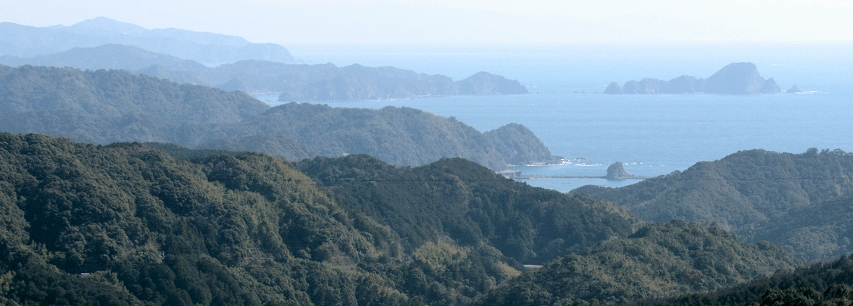
View of the Shikoku coastline from the Soemimizu Pilgrim Trail.

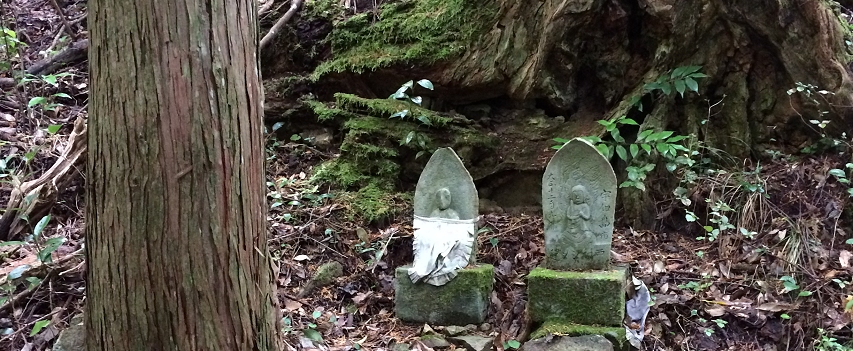
Site of the settai-matsu on the Kashiwazaka Trail.
Day 6
Overnight in Matsuyama
Breakfast, lunch and dinner included
Travel by vehicle to the southern terminus of the Kashiwazaka Trail. This trail is a six and a half mile segment of the old pilgrimage route through the mountains more or less mid-way on the long fifty kilometer stretch between Kanjizaiji (Temple 40) and Ryukoji (Temple 41). Wonderful views over the contorted shoreline of the Yura Peninsula can be enjoyed from portions of this trail. Following the hike along the Kashiwazaka Trail, head north by vehicle to Taisanji (Temple 52) and Enmyoji (Temple 53) on the northern outskirts of the city of Matsuyama. Time permitting, there is an option to walk the three miles between Temple 52 and Temple 53. Overnight in Matsuyama.
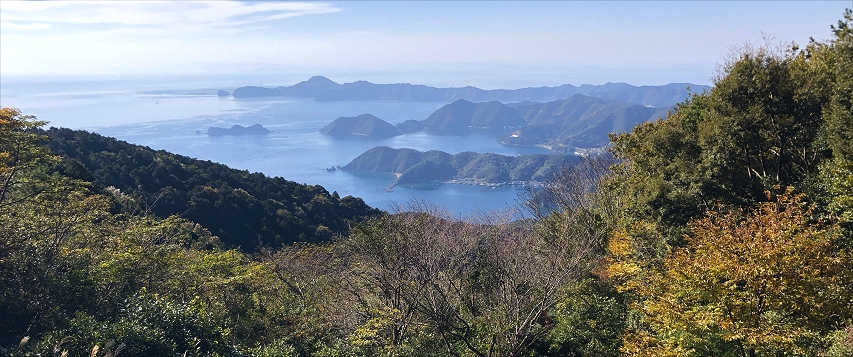
View of the Yura Peninsula from the Kashiwazaka Trail.

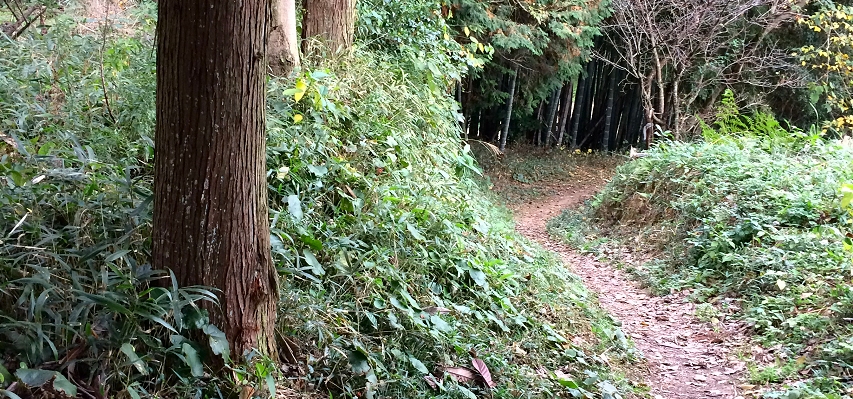
The trail between Eifukuji and Senyuji.
Day 7
Overnight in Imabari
Breakfast, lunch and dinner included
Today, visit Temples 54 through 59, a six-temple cluster in the vicinity of Imabari city. Temple 55 (Nankobo) sits within the urban center of Imabari, but the other temples are scattered throughout the rural countryside west and south of the city center. Within this cluster of temples, the 4.25 mile section of the pilgrimage route between Taisanji (Temple 56) and the hillside temple of Senyuji (Temple 58) is perhaps the best for walking. Spend this evening at a resort on the shores of the Seto Naikai (the Seto Inland Sea).

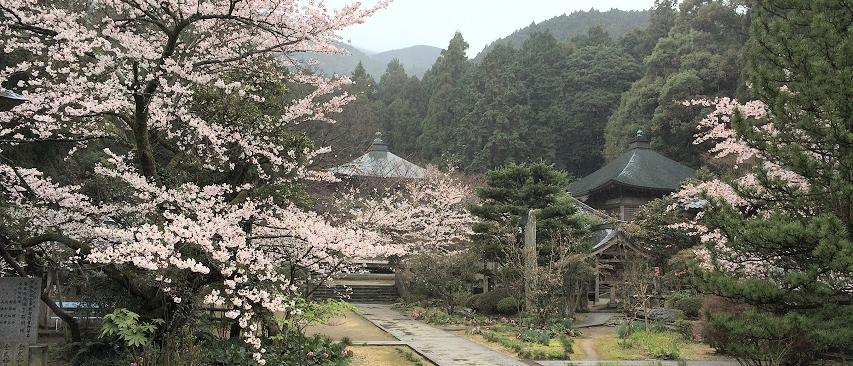
Misty and peaceful Sankakuji.
Day 8
Overnight at Takamatsu
Breakfast and lunch included
Travel by vehicle eastward from Imabari bound for Temple 62 (Hōjuji). Hōjuji is one of the 88 Temples, but the only one that is not part of the Reijōkai (the Shikoku Pilgrimage Temple Association). From Hōjuji it’s a short 0.7 miles to Temple 63 (Kichijōji) so it’s just as fast walking there as using the bus. Kichijōji is the only temple on the Shikoku Pilgrimage that has Bishamon-ten as the main deity. There is a rock with a round hole across from the main hall. It’s said that if you can walk from the main hall with your eyes closed and place the tip of your walking staff through the hole in the rock, your wish will come true. From Kichijōji, it’s a 2 mile bus ride to Temple 64 (Maegamiji). From Maegamiji, we’ll travel to Temple 65 (Sankakuji). The main deity at Sankakuji (Jūichimen Kannon bodhisattva) wards off misfortune and people whose prayers are answered leave rice paddles in return. Continue by vehicle to the temples of Jinnein (Temple 68) and Kanonji (Temple 69) which are located next to each other and adjacent to the lovely, seaside Kotohiki Koen (park). Kotohiki Koen features an enormous sand sculpture in the shape of a seventeenth century coin (Zenigata sunae). Viewing this “sand coin” (a short walk from the temples) is said to bring the viewer good luck, long life and freedom from financial worry. Following the visit to Temples 68 and 69, proceed by bus to Temple 70 (Motoyamaji) with its newly restored five-story pagoda. Following the visit to Motoyamaji, continue by vehicle to Temple 67 (Daikoji) before continuing on to your harborside hotel in Takamatsu. Settle in for the next two nights.
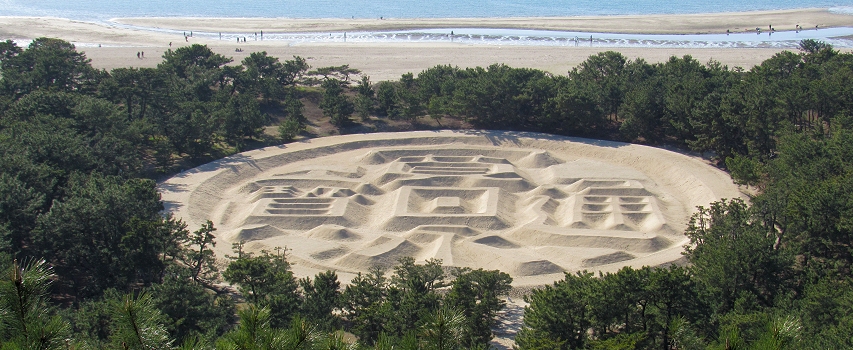
The sand sculpture known as Kan-ei-tsuho in Kotohiki Park.

Day 9
Overnight at Takamatsu
Breakfast, lunch and dinner included
Start this morning with a visit to Takamatsu’s well-known Ritsurin Gardens (Ritsurin Koen) where you’ll have some time to wander through the spacious grounds containing several ponds and hills along with elegantly sculpted trees and manicured plantings. Ritsurin Koen dates from the beginning of the early seventeenth century and is frequently recognized as one of the finest landscape gardens in Japan. Following the visit to Ritsurn Gardens, proceed by bus to Tennoji (Temple 79). Then travel to the Iwata-jinja (a Shinto shrine known for its springtime wisteria blossoms) from where you can choose to walk the 4 miles to Ichinomiyaji (Temple 83). Later, travel by vehicle to Okuboji (Temple 88) where you can symbolically complete your pilgrimage at the last temple on the route. Return to your hotel in Takamatsu and enjoy a farewell dinner. Your breakfast on the following morning is included.
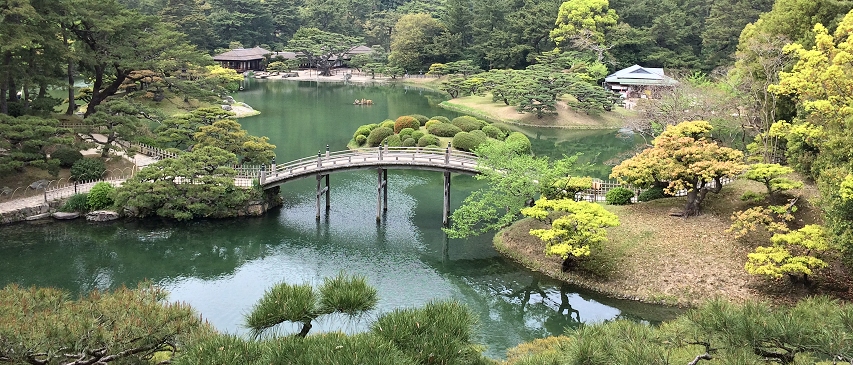
Ritsurin Gardens, Takamatsu.

Shikoku Temple Trek 3 Slide Show
Shikoku Temple Trek 3 Slide Show for iPad and iPhone
Shikoku Temple Trek Trip Comparison and FAQs


Photos on this page are by John Osaki (© All Rights Reserved) except as otherwise credited.


